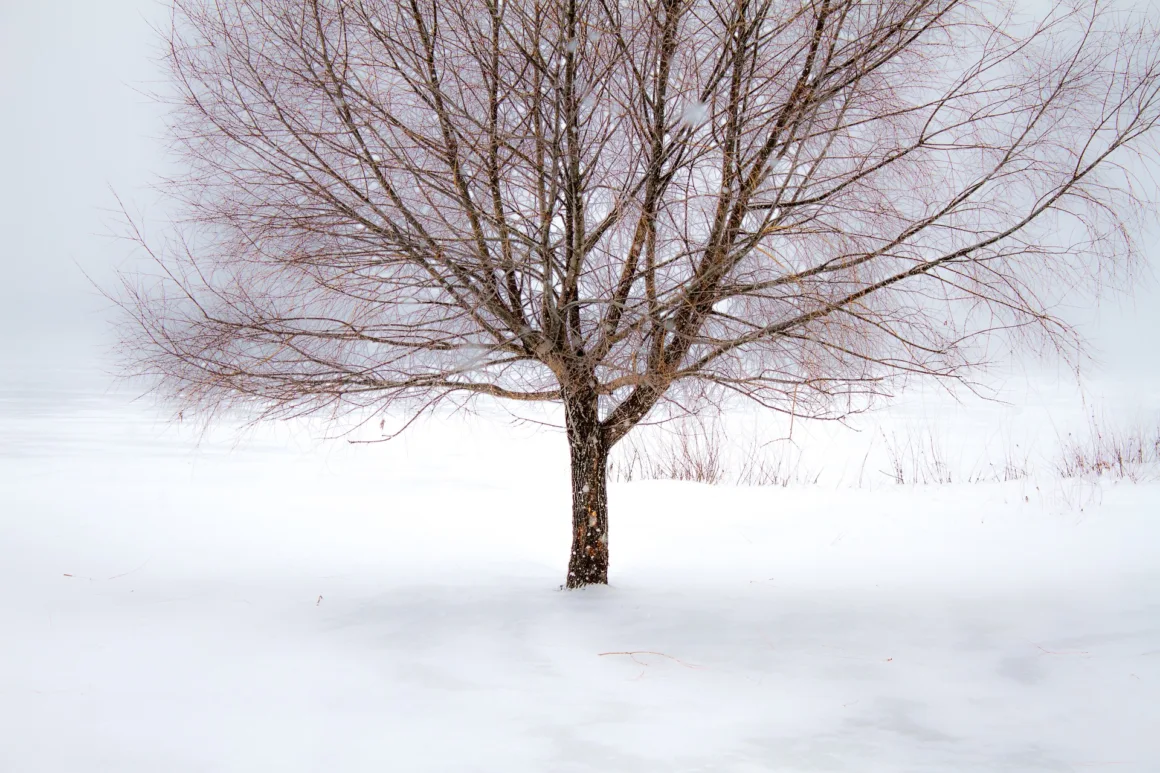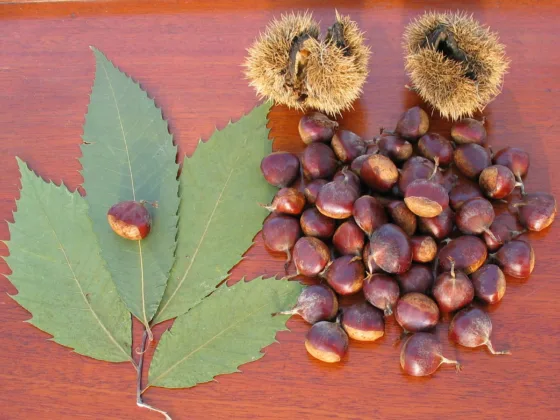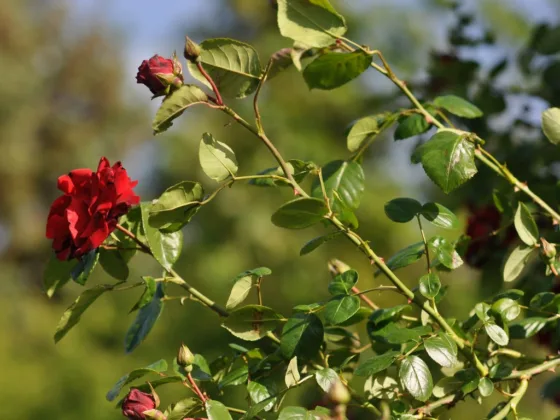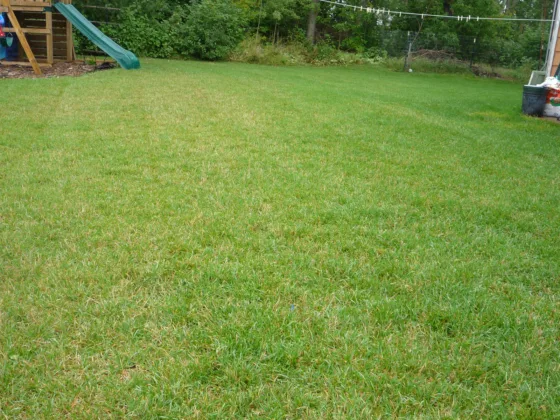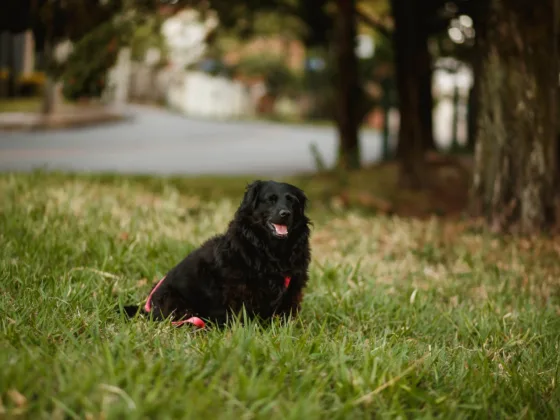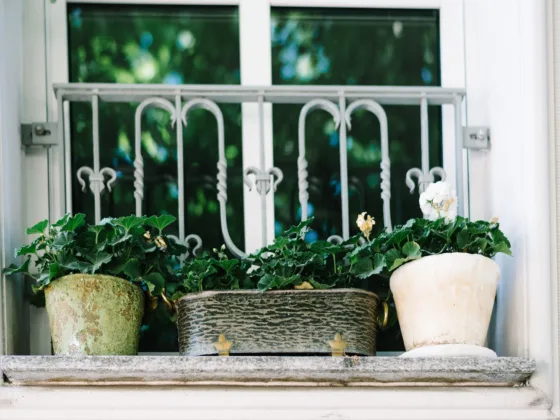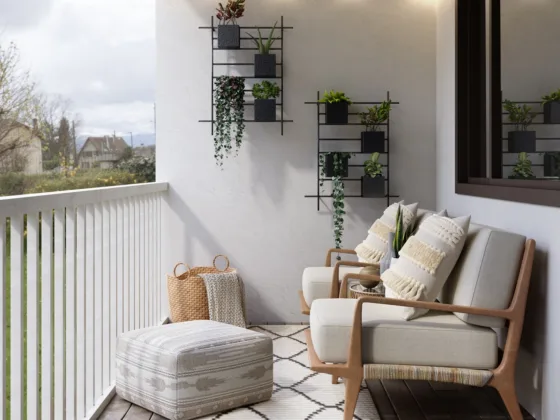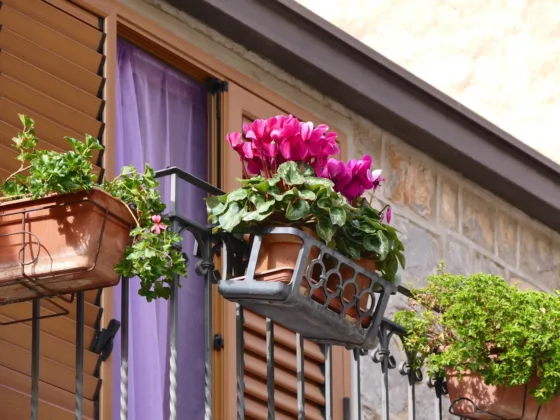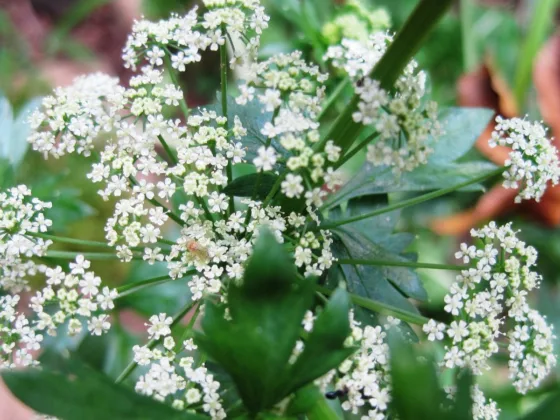The winter charm of deciduous trees and shrubs is often overlooked, as most people believe that beauty is found only in leaves and flowers.
But when one gazes more intimately at the bark, one can find a whole new perspective on beauty.
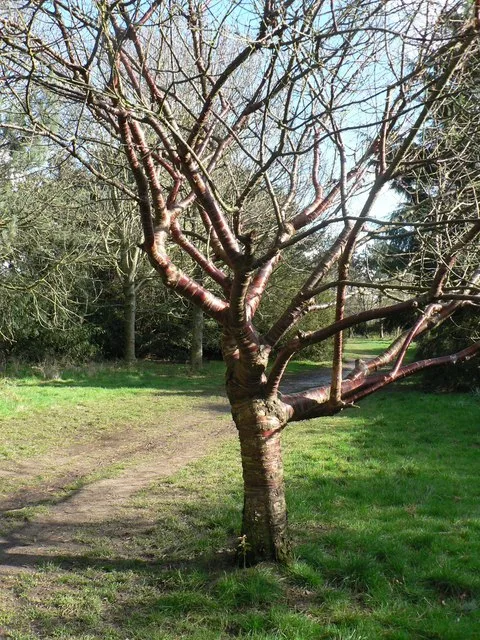
And it’s not just the deciduous trees that have interesting color to their bark; many conifers have just as fascinating a texture when looked at more closely.
Of the deciduous trees to note, the rowan or mountain ash (Sorbus spp.) and apples (Malus spp.) are the most common.
Apples and flowering crabs also provide very interesting forms, and some varieties feature mottled medium brown and pink-colored bark (such as Malus x ‘Radiant’).
Some even have fruit that persists into the spring, providing a food source for birds throughout the hard cold winters of northern North America.
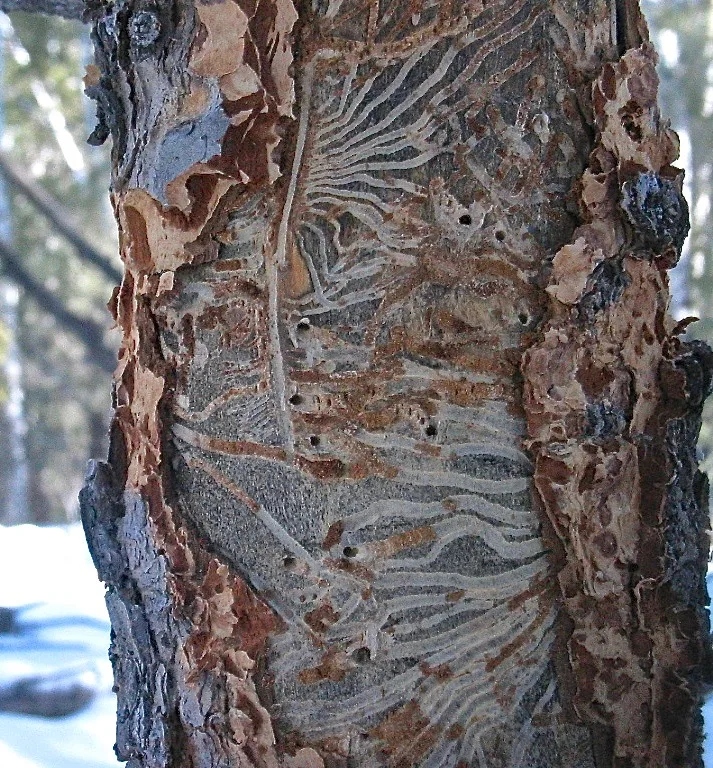
A number of species of mountain ash generally sport a copper-colored bark, similar to the Amur chokecherry (Prunus maackii), which stands out against the snow rather impressively.
However, European mountain ash (Sorbus aucuparia) and many of its cultivars have smooth olive-green bark. These can be an excellent complement to evergreens, especially if a green theme is being established for the winter landscape.
Another tree with olive-green bark is the Prairie Silk honeylocust (Gleditsia triacanthos ‘Prairie Silf’), a hardy new introduction.
Where it is able to be grown, honeylocust is a very airy and large tree. Smooth-barked trees such as mountain ash and honeylocust should have their bark wrapped to protect them from sunscald, especially when the trees are very young and the bark is at its smoothest.
This brings us to one tree which can truly be appreciated only if planted on a large acreage or property, the noble willow (Salix spp.).
Read Also :
Willows offer a wide selection of bark and twig colors from which to choose. Many cultivars derived from golden willow (S. alba ‘Vitellina’) and laurel leaf willow (S. pentandra) have colored bark ranging from lime green to yellow and orange.
Prairie Cascade weeping willow (S. x ‘Prairie Cascade’), a hardy introduction from Canada, has brilliant yellow stems that glisten in the sun as they sway with the wind.
Red is a common color for bark in the shrub forms of willow, whether the brownish-red of the pussy willow (S. caprea) or the reddish-purple of the arctic willow (S. purpurea).
Of particular note is the Flame willow (S. x ‘Flame’), a striking addition to the winter landscape with its bright orange to red-colored bark.
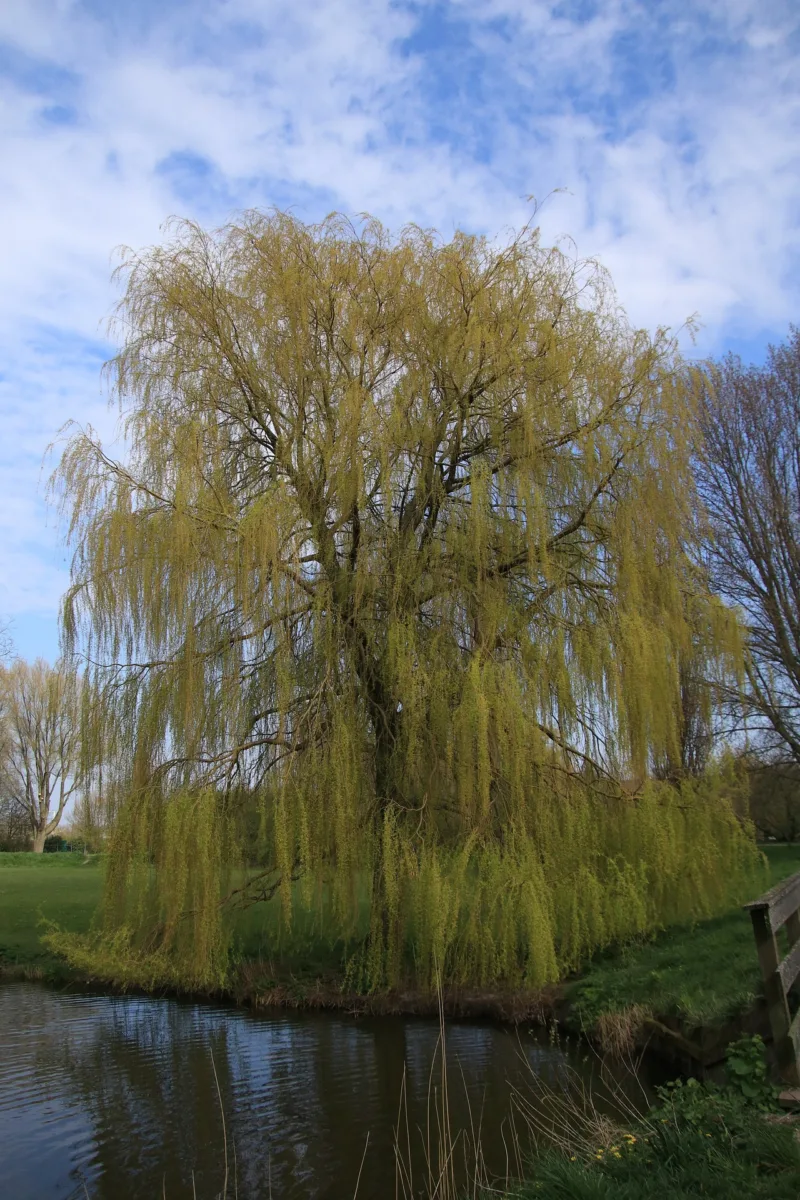
When talking about deciduous shrubs and bark color, one cannot forget to mention dogwood (Cornus spp.).
There are many types of this genus, and each cultivar has a distinctive bark color of its own. Colors range from clear yellows and greens at one end of the spectrum to hot reds, oranges, and purples at the other end.
Siberian or Coral Red dogwood (C. alba ‘Sibirica’) is among the showiest, with its brilliant coral-red stems that command attention as they emerge out of the snow.
Other plants which bear mentioning are mock orange (Philadelphus spp.), which though not all that colorful have a very dark, almost black bark that floats upon the snow.
Japanese barberry (Berberris thunbergii) and its many cultivars are always a charm with their fine barbs, usually of a red or different color than the main bark. Asian forms of maple, such as Japanese (Acer palmatum) and Korean (Acer psuedosieboldianum) have, for the most part, colorful new branches that give relief to the winter white.
For all but the southernmost of Northscapers, these species will require significant winter protection to get them through our harsh winters.
Gardeners in the extremely cold climates of zones 1 through 3 will also find it hard to get Japanese kerria (Kerria japonica), with its perpetually lime green stems, to survive, although it is a very worthwhile plant for hedges and massing in zones 4 and 5.
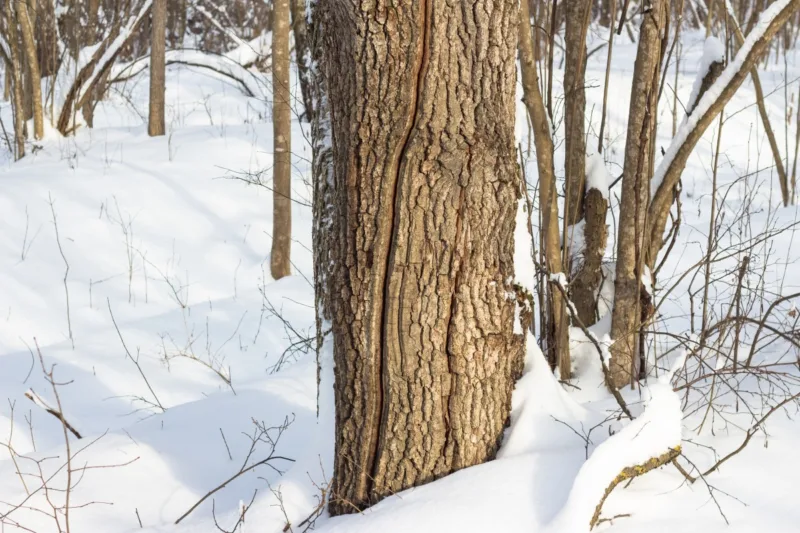
And finally, let’s consider a plant that one rarely thinks of for bark color.
Usually, people plant pines for their evergreen character, but Scots pine (Pinus sylvestris) and Austrian pine (Pinus nigra) have exceptionally impressive exfoliating bark which reveals a coppery-orange color as it matures.
This is most attractive in the winter when juxtaposed against a white backdrop of snow. When elegantly pruned, topiary forms of these pine species further add to the winter splendor.
So when planning a landscape, it is not just important to look at the spring and summer habits of a given plant but examine what they will look like in the landscape during the winter months.
Northscapers need to remember that winter is a significant part of their environment and therefore warrants consideration in their planning.
Besides colorful bark, you should also look into plants that bring color into winter through their fruit, which also provides a source of food for the birds that overwinter in the North.
You’ll find this information in a separate info sheet.
